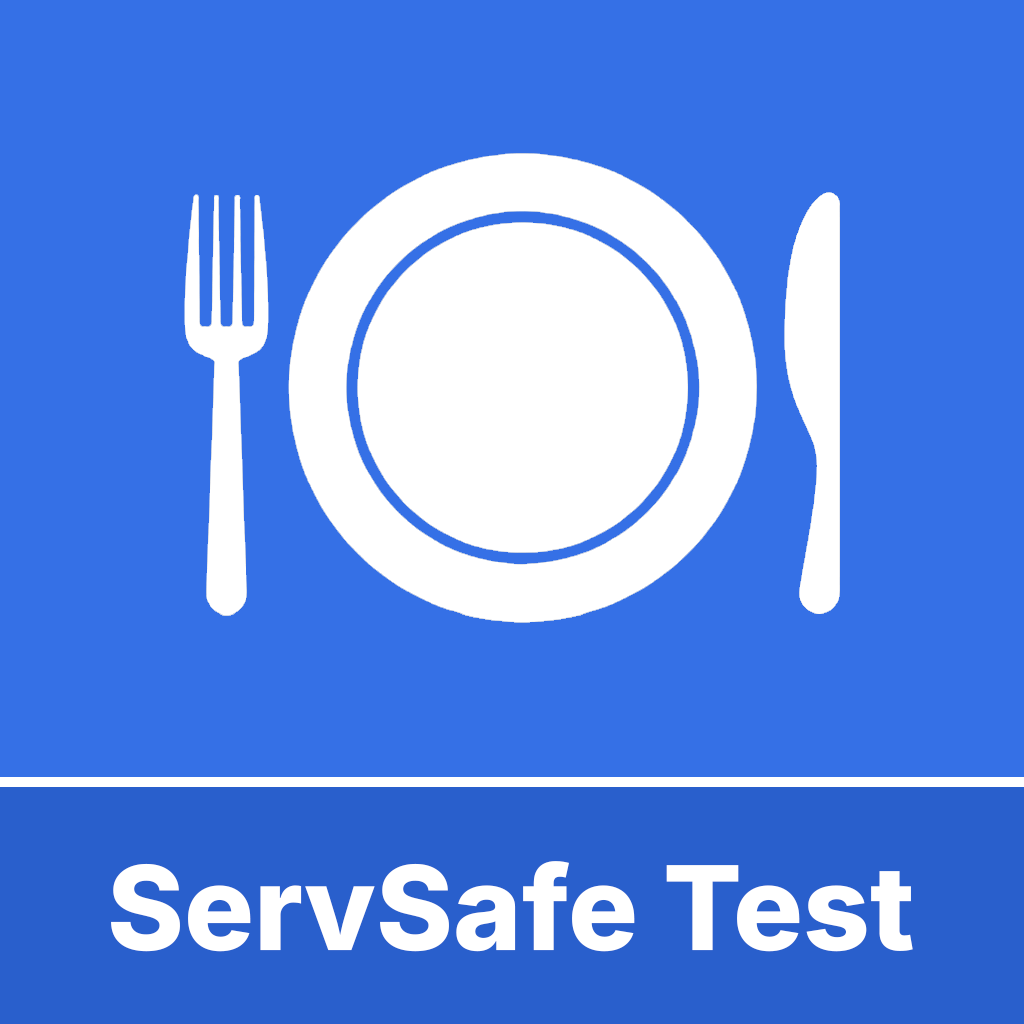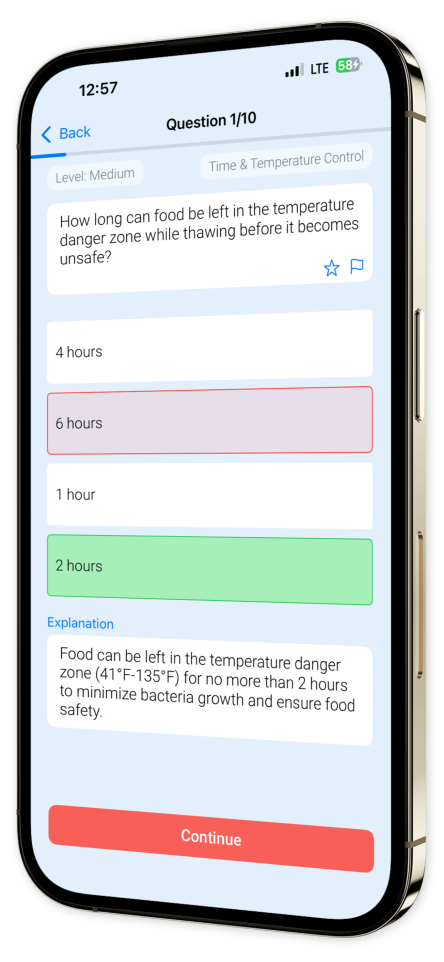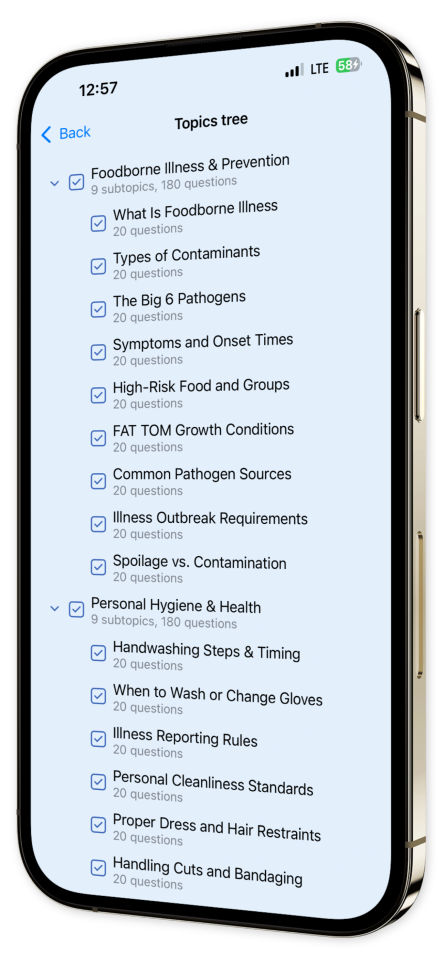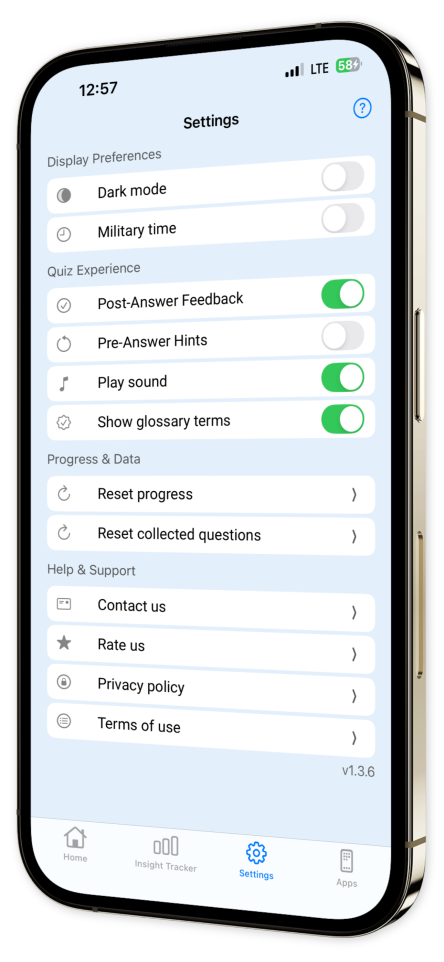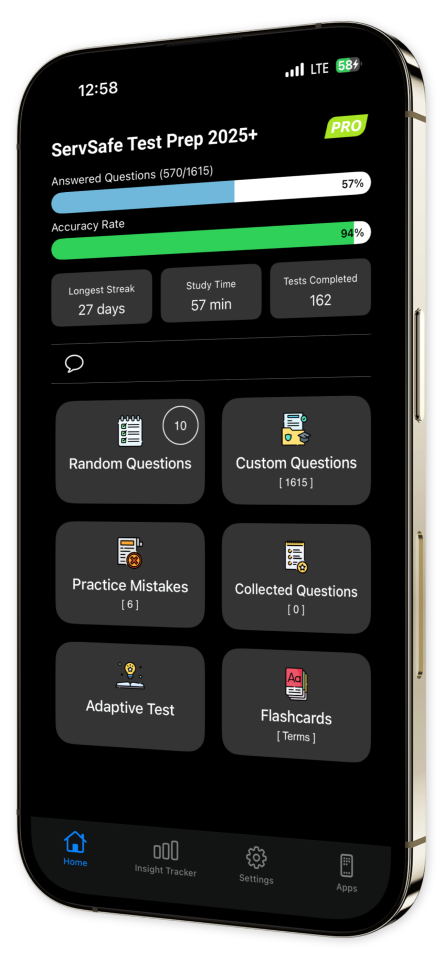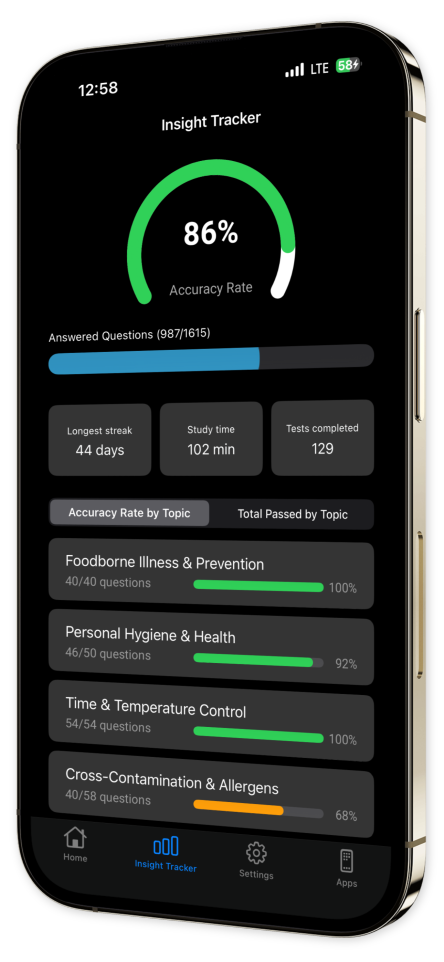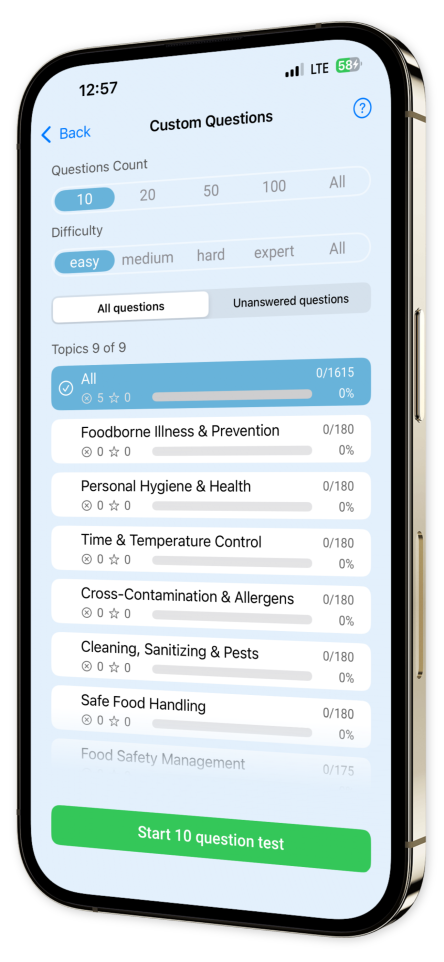

ServSafe Test Prep 2025+ iOS App
Achieve culinary success with ServSafe Test Prep 2025+!
Our app transports you into an immersive test environment, perfectly tailored to prepare you for your ServSafe certification exam.
Dive into an extensive collection of practice questions that meticulously cover all the critical aspects necessary for food safety and sanitation excellence.
Each question comes with a finely detailed explanation, empowering you to build a deeper understanding and accentuate your expertise.
Key Features:
Extensive Question Bank: Venture into a vast pool of practice questions encompassing crucial topics, ensuring a comprehensive preparation journey.
In-Depth Explanations: Enrich your learning experience with detailed rationales for every question, boosting retention and comprehension.
Custom Test Creation: Tailor your quizzes by choosing specific topics and question types, enabling focused study sessions where you need it most.
Progress Tracking: Monitor your progress with precision using our intuitive tracking tools, helping you identify strengths and areas for further improvement.
Offline Access: Learn without limits! Study anytime, anywhere, even when you're offline, making it the perfect companion for unpredictable schedules.
User-Friendly Interface: Enjoy a clean, intuitive app design that keeps you engaged and focused on mastering food safety concepts.
Download ServSafe Test Prep 2025+ today and step into a smarter approach to securing your ServSafe certification!
Excel in your career by mastering food safety essentials with ease.
Your culinary future starts here!
Content Overview
Explore a variety of topics covered in the app.
Example questions
Let's look at some sample questions
What type of contaminant is Salmonella considered in food safety?
BiologicalPhysicalChemicalAllergenic
Salmonella is a type of bacteria, which classifies it as a biological contaminant.
What is the category of contaminant that includes bacteria like Campylobacter?
AllergenicChemicalBiologicalPhysical
Campylobacter is a bacterium, making it a biological contaminant in food safety.
Identify the type of contamination that occurs when a cutting board is used for both raw chicken and vegetables without proper sanitation.
BiologicalPhysicalChemicalCross-contact
Using the same cutting board for raw chicken and vegetables without sanitation leads to biological contamination due to the transfer of pathogens like Salmonella.
What is the most effective way to prevent the spread of Hepatitis A in food establishments?
Wearing glovesProper hand washingUsing hairnetsCleaning floors
Proper hand washing is essential to prevent the spread of Hepatitis A, a virus transmitted through the fecal-oral route.
Which of the Big 6 pathogens is most commonly associated with raw poultry and eggs?
Salmonella spp.NorovirusE. coliHepatitis A
Salmonella spp. is most commonly found in raw poultry and eggs.
During an outbreak, how long can norovirus survive on hard surfaces?
1 hour12 hours24 hoursSeveral weeks
Norovirus can survive on hard surfaces for several weeks, making it persistent in the environment.
Identify the correct incubation period for Hepatitis A.
12-48 hours4-6 days15-50 days2-4 weeks
Hepatitis A has an incubation period of 15-50 days, meaning symptoms can appear within this range after infection. Understanding this period is essential for timely intervention and control.
Salmonella is often associated with which food source?
ShellfishGround beefPoultry and eggsLeafy greens
Salmonella is commonly associated with poultry and eggs. These foods must be cooked to appropriate temperatures to mitigate the risk of infection. Proper handling and storage are also important.
What is the onset time for foodborne illness caused by Staphylococcus aureus?
1-6 hours24-48 hours3-5 days1 week
Symptoms from Staphylococcus aureus can appear rapidly, usually 1 to 6 hours after ingestion.
What is the typical onset time for symptoms of Clostridium perfringens intoxication?
2 to 4 hours8 to 16 hours48 to 72 hours1 to 2 weeks
Symptoms of Clostridium perfringens typically appear 8 to 16 hours after exposure.
